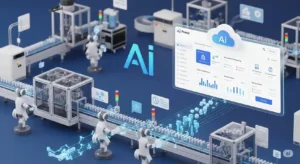DevOps is a concept and method that is constantly growing. DevOps Software promotes quicker, better application development and faster distribution of new or updated software features or goods to consumers.
The Agile DevOps methods promote improved, continuous communication, cooperation, integration, visibility, and transparency between application development teams (Dev) and their counterparts in the IT operation teams (Ops).
Every stage of the DevOps lifecycle—from early software design to the phases of coding, building, testing, and releasing, and on to deployment, operations, and continuing monitoring—is characterized by this tighter link between “Dev” and “Ops.” This connection fuels an ongoing feedback loop with customers that leads to creation, testing, and deployment which are all improved upon. The quicker, and continuous deployment of required feature modifications or additions may be one outcome of these efforts.
DevOps Software can help in these areas. Some individuals divide DevOps aims into four categories: culture, automation, measurement, and sharing (CAMS). By automating time-consuming, manual, or static procedures involved in integration, development, testing, deployment, or monitoring, these technologies help speed up and improve collaboration in development and operations workflows.
Why is DevOps Software Important?
A major objective of Deployment Tools in DevOps is customer satisfaction and the quicker delivery of value, along with efforts to cut obstacles for better communication and collaboration between development and IT operations teams. Additionally, DevOps Software is intended to support company innovation and the pursuit of ongoing process improvement.
The DevOps Tools promote business value delivery to clients of an organization that is quicker, better, and more secure. More frequent product releases, features, or upgrades might represent this value. It may have to do with how soon a product update or new function reaches customers while keeping the necessary quality and security standards. Or it may concentrate on how soon a problem or flaw is found, fixed, and then re-released.
Software performance, availability, and reliability are all supported by the underlying infrastructure when it is initially designed, tested, and then put into production. DevOps Framework comes up with many other benefits such as:
Better Focus on the Customers
The shift to DevOps Software puts the team back in the customer’s shoes. It’s simple to make the mistake of believing that the ultimate purpose of software development is to create extremely excellent software. Because the program turns out so beautifully in the end, this mentality makes it plausible to justify lengthy development and delivery deadlines.
Who said the program is genuinely superior despite a lengthy development period? But more crucially, focusing just on the program causes you to overlook the client—one thing that defines your company’s existence.
Integrate Teams for Quicker Product Shipment
DevOps Software also allows other teams, such as operations, to benefit from working in an agile or iterative setting. However, operations teams have found it difficult to keep up and are unable to deliver software as quickly. These teams are united by DevOps Model, which speeds up software delivery. Are clients concerned about a quicker development timeline? No doubt. It is a competitive advantage if you can do the task twice as quickly while maintaining the quality of your work.
Simplifies Development Focus
There are two ways to develop a release; a major release, which bundles several features into a single deployment, or a rapid release, where features are rolled out one at a time. Because you generally won’t be able to adjust the list of features too much after you get started, if you have a huge release, you probably worry about prioritizing a lengthy list of features that go into that version. And if you do make significant modifications, you must take into account the work that has already been completed before you start making new adjustments. The components of a release become entangled.
On the other hand, if you reduce the quantity of work you do, you may significantly simplify how you prioritize your tasks. Your team works on one feature every day or every week, integrating creating and releasing into a seamless system. In contrast to a major release, when you might have to spend time sifting through several issues if something goes wrong, there is only one thing to look at.
Automates Development Operations
In general, engineers and developers don’t spend enough effort automating processes for their benefit. Why? There has never been a need to if your team has always done large releases. Few new installations occur each year, so why consider automation? However, a more efficient deployment process, supported by automation, will greatly reduce time spent due to faster, smaller releases that happen more often. (Time that may be spent on further innovation or addressing other company issues.)
What should be automated? Start with the elements of your releases that are routine. Testing and drafting specifications typically have parts that may be automated. Be careful not to automate processes or create new technological tools only for their own sake. Know why you are automating and what advantages or time savings you expect. Not all automation is worth the effort it takes to create them.
To remain competitive in the market, you must incorporate DevOps Software into your organization. Contact Trident Information Systems if you wish for a demonstration.






